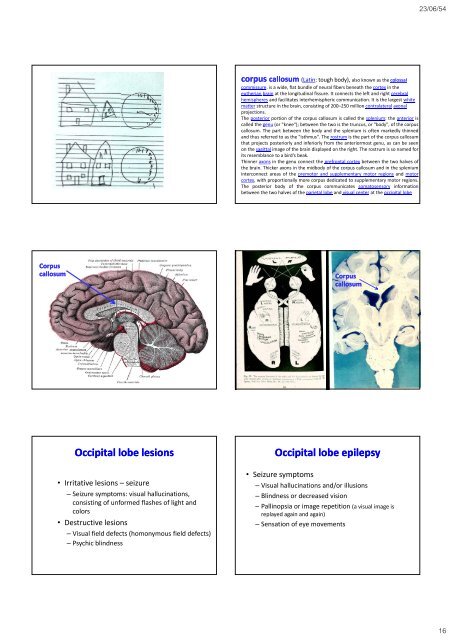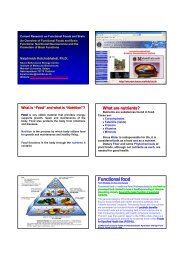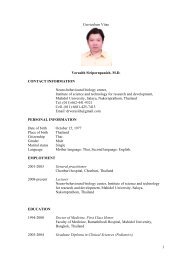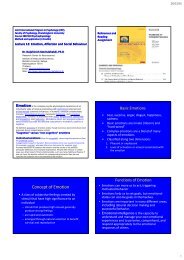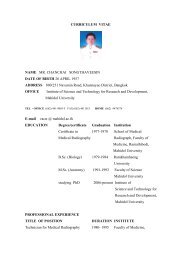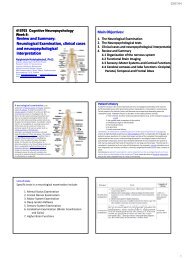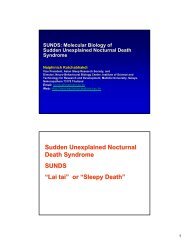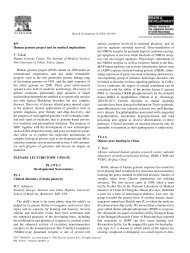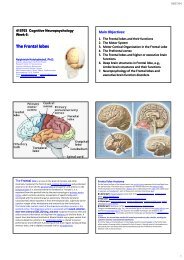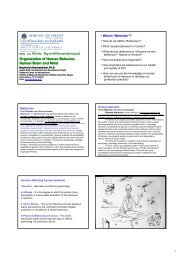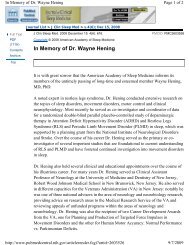The occipital The occipital lobes Occipital lobe - Mahidol University
The occipital The occipital lobes Occipital lobe - Mahidol University
The occipital The occipital lobes Occipital lobe - Mahidol University
Create successful ePaper yourself
Turn your PDF publications into a flip-book with our unique Google optimized e-Paper software.
23/06/54corpus callosum (Latin: tough body), also known as the colossalcommissure, is a wide, flat bundle of neural fibers beneath the cortex in theeutherian brain at the longitudinal fissure. It connects the left and right cerebralhemispheres and facilitates interhemispheric communication. It is the largest whitematter structure in the brain, consisting of 200–250 million contralateral axonalprojections.<strong>The</strong> posterior portion of the corpus callosum is called the splenium; theanterior iscalled the genu (or "knee"); between the two is the truncus, or "body", of the corpuscallosum. <strong>The</strong> part between the body and the splenium is often markedly thinnedand thus referred to as the "isthmus". <strong>The</strong> rostrum is the part of the corpus callosumthat projects posteriorly and inferiorly from the anteriormost genu, as can be seenon the sagittal image of the brain displayed on the right. <strong>The</strong> rostrum is so named forits resemblance to a bird's beak.Thinner axons in the genu connect the prefrontal cortex between the two halves ofthe brain. Thicker axons in the midbody of the corpus callosum and in the spleniuminterconnect areas of the premotor and supplementary motor regions and motorcortex, with proportionally more corpus dedicated to supplementary motor regions.<strong>The</strong> posterior body of the corpus communicates somatosensory informationbetween the two halves of the parietal <strong>lobe</strong> and visual center at the <strong>occipital</strong> <strong>lobe</strong>CorpuscallosumCorpuscallosum<strong>Occipital</strong> <strong>lobe</strong> lesions• Irritative lesions –seizure– Seizure symptoms: visual hallucinations,consisting of unformed flashes of light andcolors• Destructive lesions– Visual field defects (homonymous field defects)– Psychic blindness<strong>Occipital</strong> <strong>lobe</strong> epilepsy• Seizure symptoms– Visual hallucinations and/or illusions– Blindness or decreased vision– Pallinopsia or image repetition (a visual limage isreplayed again and again)– Sensation of eye movements16


